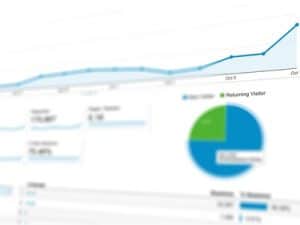Click here to get this post in PDF
Improving your website architecture will definitely help with your SEO campaign. Good site architecture is basically all about how visitors and search engines find their way around your site. It’s about getting top-notch, relevant content that serves the needs of your visitors and reducing the number of times they have to click through your website’s pages to find it. With proper site architecture, your website will have a better indexation rate and an increase in search engine traffic.
If it’s your first time hearing about site architecture, then you have a lot to learn.
In this article, we are going to discuss in detail what website architecture really is, why it’s important to implement it, and some useful tips to help you get started.
What is site architecture?
Think of site architecture as the blueprint of a building. Without a blueprint, there’s a good chance the building will fall and crumble. Likewise, if you fail to develop proper site architecture, it will be difficult for your visitors to navigate your site. Your site’s architecture basically lays out how your website should be structured so as to best serve your visitors and search engines.
Proper site structure will ensure that your content is organized (which can improve your search engine rankings) and uses effective internal linking to create topical relevance. Topical relevance helps search engines easily understand the topic of your website.
Why does website architecture matter?
There are various benefits you will enjoy with proper site architecture.
Improved Search Engine Rankings
Search engine crawlers will be able to navigate your site quickly and much more efficiently, which will help improve your rankings. The easier it is for search engines to crawl your site, the faster they will find new content and the easier it will be to rank that content better in the SERP’s (search engine result pages).
Improved User Experience
Your visitors will be able to easily and quickly navigate through your website’s pages. This will create a more enjoyable experience, which will entice them to visit your site more frequently.
Increase Website Authority
Your site’s authority will increase because links will be equally distributed throughout your site. This means you’ll need to obtain fewer links to rank your website.
How to design the perfect website architecture
There are various ways in which you can design your site architecture in such a way that it is responsive, quick, and easy to navigate.
Limit the amount of internal links per page
It’s important that you reduce the number of internal links on a single page. Instead, it’s best to send internal links to pages that have a similar topic. For example, if your post is discussing “weight loss tips” avoid sending an internal link to a blog post discussing “how to clean your carpet.” Instead, send a link to a post discussing “best juice recipes for weight loss.” Remember that the fewer internal links you have on a single page, the more link equity and quality it will have.
Reduce the number of clicks it takes to reach every single page on your website
When designing your site’s internal linking, it’s important that you limit the number of clicks it takes to reach every page on the site. The more clicks it takes to get to a single page, the harder a search engine crawler will need to work to reach your pages. You want to make it as easy as possible for them. The easier it is, the higher they’ll rank your website. At a maximum, no page should take more than four clicks.
Use keyword-rich anchor text for internal links
The anchor text should be placed in such a way that it entices your visitors to click through to the next page. It’s important to use keyword-rich anchor text for internal links. I recommend using 50% keyword-rich anchor text, 25% generic anchor text, and 25% branded.
Let’s use an example to clarify. For this example, the name of our company is “Wymax cleaners” and we’re trying to rank a page for the keyword “Denver carpet cleaners”. In this case, 50% of the internal links pointing to that specific page should have the anchor text “Denver carpet cleaners”, 25% of the internal linking anchor text would be “Wymax cleaners”, and the remaining 25% would use generic anchor text such as “visit this page” or “click here”.
Different Types of Site Architecture Design that are Beneficial for SEO
The type of website you have and your budget will determine which type of site architecture you should use.
Conventional Architecture
This approach starts with the homepage of your site. With this type of architecture, you will have your internal links flowing from the homepage to the category pages, all the way to individual product pages. If you structure your site in this manner, all the external links you receive to your homepage will transfer link equity to your internal pages.
This method works best for sites that naturally receive a majority of their links to their homepage. The downfall of this approach is that it’s much more difficult and less natural to build a high quantity of links to your site’s homepage. If you think of it logically, people are much more likely to link out to a high-quality blog post than to your website’s homepage.
Reverse Architecture
The reverse architecture involves creating your site’s authority from bottom to top. To use this method, you’ll need to create unique and high-quality content. From your blog posts, you’ll internally link to the pages you want to rank. Once you have this in place, you’ll then start building external links to that content.
Reverse architecture works great for ranking e-commerce stores, local businesses as well as multi-national companies. The only disadvantage is that it can be costly and time-consuming to produce unique and high-quality content on a regular basis.
Website Silos
Building multiple website silos is another incredible strategy for improving your site architecture. A silo basically consists of three pages that are closely related to one another. The first page will target a broad keyword while the second page will target a long-tail keyword. The third page will target a more specific long-tail keyword. After creating these pages, you will then interlink the first page to the second, the second page to the third page, and the third page to the first page.
This is beneficial because it will greatly improve the topical relevance of each page, and evenly distribute link equity throughout the pages in the silo. When you receive a link, it’ll benefit every page in the silo. As you create more content on your site, you will eventually build multiple silos and interlink those that have similar topics.
When you focus on building a proper website architecture, you’ll have a much easier time ranking high in search engines and provide a much better user experience for your visitors. You’re now equipped with everything you need to get started, so go take action! If you have any questions don’t hesitate to leave them in the comments below.
You may also like: How to Get Free SEO for Your Small Business
About the Author
Stephen Fox is the co-founder of Upkeep Media, an online marketing agency specializing in search engine optimization. He’s a huge fan of working out, travelling and reading.




